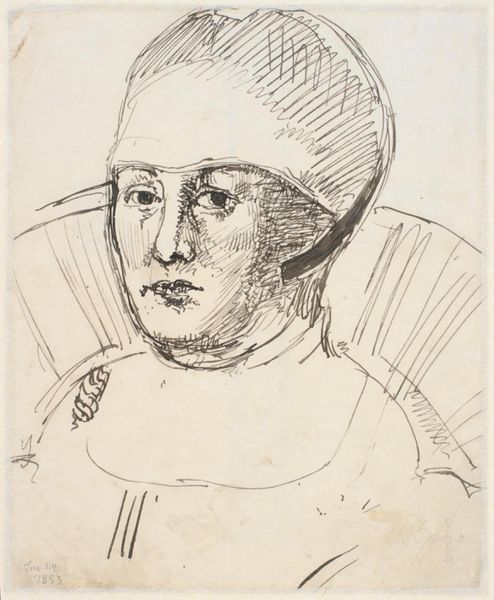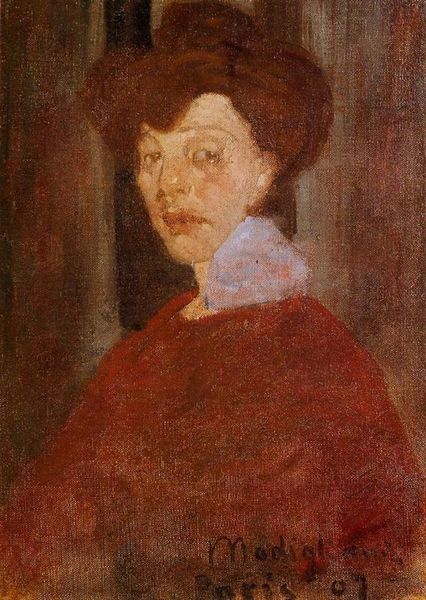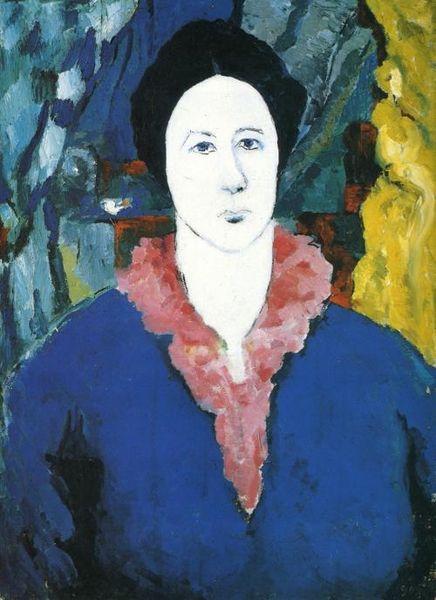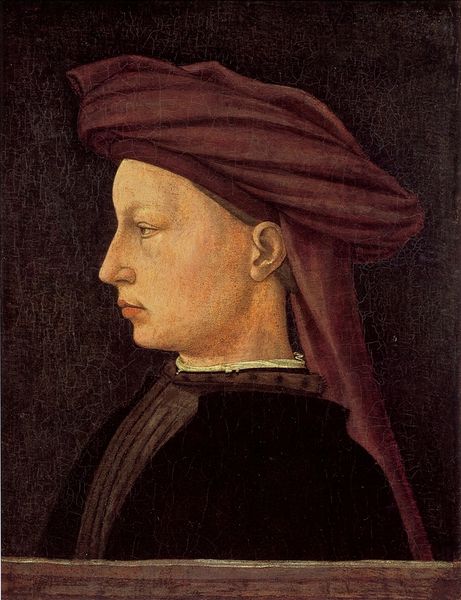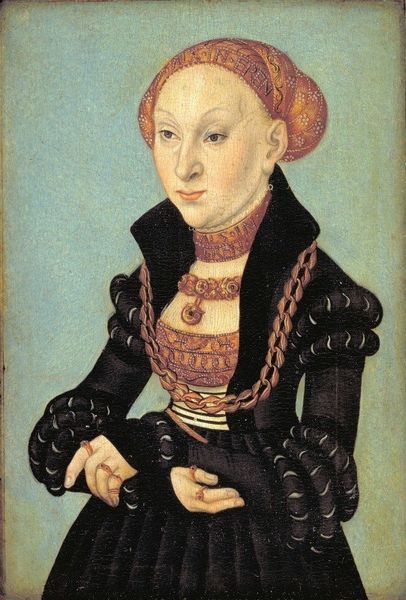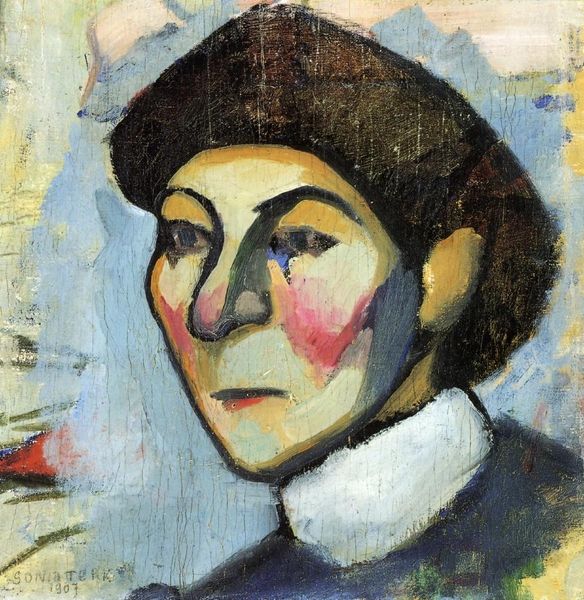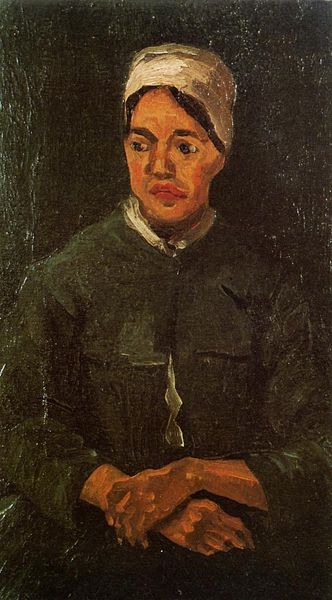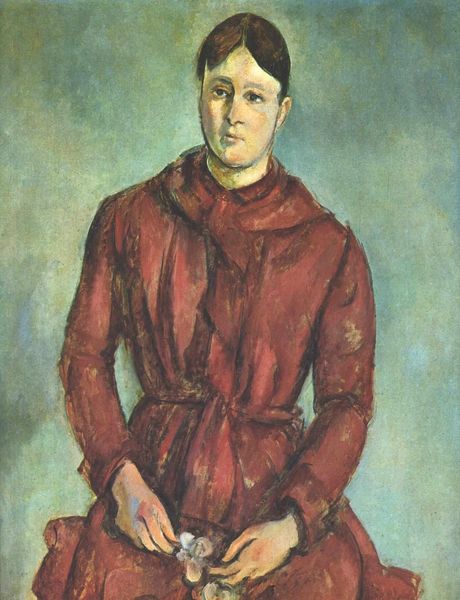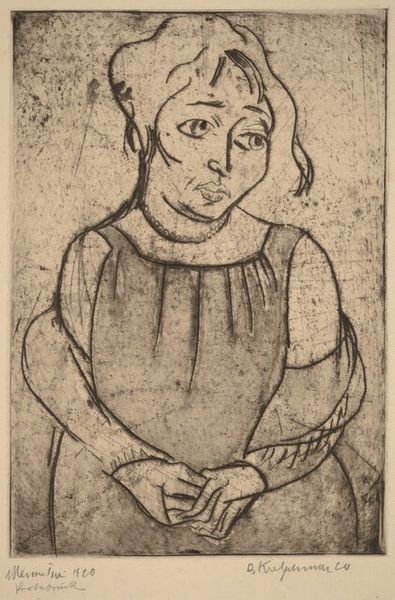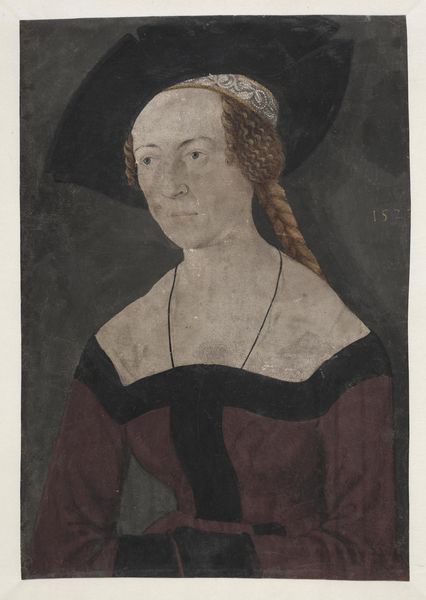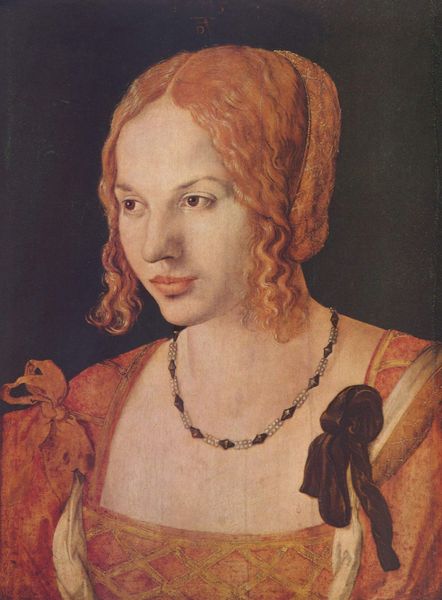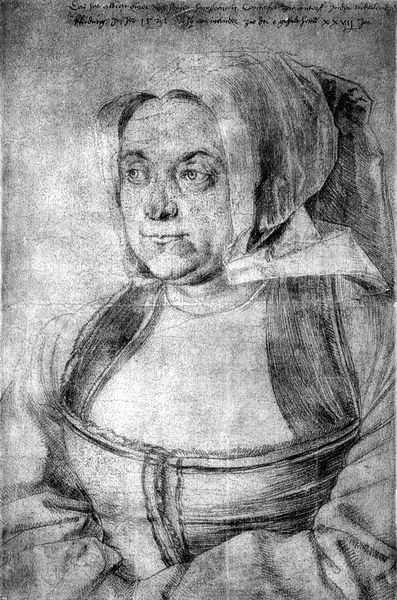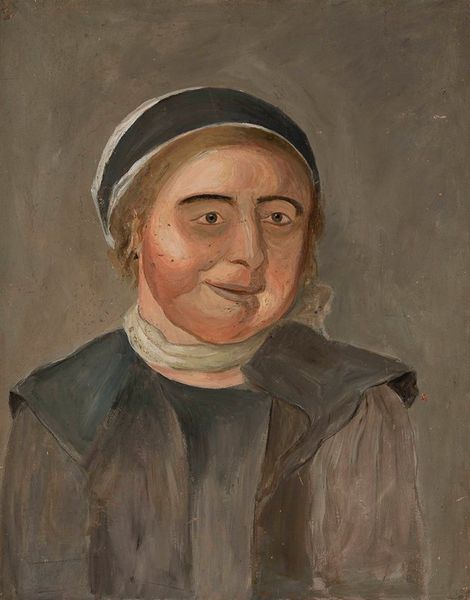
painting, oil-paint
#
portrait
#
cubism
#
painting
#
oil-paint
#
soviet-nonconformist-art
#
figuration
#
oil painting
#
geometric
#
portrait art
#
modernism
Dimensions: 34 x 25 cm
Copyright: Public domain
Curator: Standing before us is Kazimir Malevich’s "Portrait," painted in 1932, using oil paints. Editor: It strikes me as rather unsettling. The palette feels restricted, almost oppressive, and those geometric forms hint at a kind of masked identity. Curator: Interesting. It's vital to remember the sociopolitical climate in the Soviet Union at the time. Socialist Realism was becoming the only acceptable artistic style, thus any deviation, such as the cubist elements evident in this piece, can be viewed as a quiet form of resistance. The materials available would have been tightly controlled as well. Editor: Agreed. The formal structure, though, intrigues me. Notice how the rigid lines of the subject's clothing clash with the softer curves of the face, creating a visual tension. The juxtaposition suggests conflict and possibly reflects a tension in the artist’s inner world or societal context. Curator: Exactly, Malevich had already faced intense criticism for his avant-garde abstract work, but in transitioning back to figuration we witness his attempts to survive in that rapidly changing art world. You can clearly observe his style evolution as a process rooted in specific, restrictive conditions, and material realities. Editor: Yet, in that limited range, Malevich finds remarkable expressive potential. The colour choices in "Portrait" feel loaded; the stark white face contrasts with the red hat and hints at a complex interplay of tradition and modernism. Those vibrant reds create an emotional focal point, anchoring the otherwise muted color structure and amplifying this figure's ambiguous presence. Curator: Furthermore, his use of crude, industrial oil paint could signify the de-emphasis of artistic flair that might’ve appealed to an elite class. Rather, we're talking about a mode of production in line with socialist ideas: that artworks are not rarified, precious commodities. It should be clear though, that there is significant value in Malevich breaking boundaries between traditional portraiture, revolutionary materials, and Soviet ideals. Editor: Indeed. His play with structure, shape, and tonality invites an open, ongoing process of viewing that surpasses merely its symbolic, cultural components and references a deeper realm. The more I contemplate its form and features, the more intricate its significance becomes, like a window into a tumultuous age as reflected in a very controlled yet daring style. Curator: Well, examining "Portrait" through the lens of its making reveals so much. From the controlled materials to its social position in the Soviet era, it unveils the dynamics between Malevich’s art and historical setting.
Comments
No comments
Be the first to comment and join the conversation on the ultimate creative platform.
